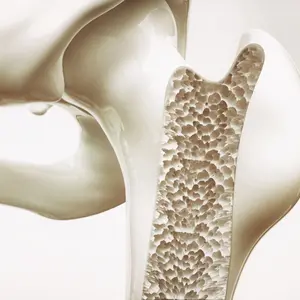

WELLthier Living and Aging

WELLthier Living and Aging
Top 5 Ways to Improve Children’s Gut Health
When it comes to gut health, the sooner we start laying the foundation, the better.
Children are increasingly suffering from conditions that are linked to the health of the gut microbiome, including allergies, gastrointestinal disorders, ADHD, mood imbalances, and others. Children are also spending more time indoors and eating a less diverse diet than the traditional diets of our ancestors. Combine all of this with the ubiquitous nature of antibacterial and antimicrobial products, which can lead to less microbial diversity, and you have a compromised gut microbiome, setting the stage for chronic conditions.
There are many things we can do to improve our children’s gut health. Here are five simple ways to start.
Get Them Outside
Playing outdoors, especially in natural environments, may activate the immune system and train it to appropriately respond to benign and not-so-benign pathogens. Rural children have richer, more diverse gut microbiota than city-dwellers, and one study found that urban children who were exposed to sod, peat blocks, planters, and cut-out segments of forest floors increased the health and diversity of their gut.
A 2020 study showed that preschool children who were exposed to nature for a period of 10 weeks increased the diversity in their gut microbiomes, had higher serotonin levels, and ate more vegetables. They also displayed more prosocial behavior and had less frequent outbursts of anger.
Make Sure They Get Enough Sleep
Nourishing the gut and sticking to regular sleep schedules and routines have been found to positively impact sleep, which positively impacts gut health.
Studies have shown that babies with low microbial diversity sleep more during the day and less at night, and that the quality, quantity, and timing of sleep also impact the gut microbiome.
In preschool children, the connection between sleep patterns and gut microbiota has also been observed. In a group of 143 four-year-olds, certain bacterial strains were associated with total nighttime sleep, sleep efficiency, and wakefulness after sleep onset. The researchers theorize that the “good” gut bacteria may regulate sleep through neurotransmitters and the immune system.
Children with obstructive sleep apnea have also shown less diverse gut microbiota, more inflammation, and potential for leaky gut compared to children without the condition.
Clean Up the Diet
“Children’s foods” are often laden with sugar, artificial and “natural” flavorings, and synthetic dyes. Anything that harms the gut also harms the brain, and children are more susceptible to the effects of chemical compounds because they are smaller (making their relative exposure per pound of body weight greater than adults), their metabolisms are immature (making their ability to “detoxify” less than adults), and their organs are still developing, making them vulnerable to disruptions.
Too much sugar can actually “turn on” genes that increase the risk of type 2 diabetes and obesity. High fructose corn syrup is an even worse offender, which comes from GMO corn sprayed with glyphosate, which may disrupt and kill “good” gut bacteria and lead to an impaired immune system.
Artificial food colorings have also been shown to disrupt the gut microbiome, and there is mounting evidence that children who regularly consume synthetic food dyes are more likely to develop ADHD and other neurobehavioral issues.
Feed Them Prebiotic & Probiotic Foods
To protect and improve children’s gut health, prebiotic and probiotic foods can help repopulate the gut with good bacteria.
Probiotic foods can help with digestion and contribute to more regular bowel movements, and prebiotics “feed” the probiotics so the good bacteria can live long enough to reproduce, creating a healthier gut. Some kid-friendly probiotic foods include fermented pickles, yogurt, and fermented coconut water. Prebiotic-rich foods include: oats, leafy greens, legumes, jicama, Jerusalem artichokes, and bananas.
Be Mindful of Antibiotics
Broad-spectrum antibiotics kill all bacteria, good and bad. Antibiotics can severely deplete a child’s microbiome, which can then become a vacuum that gets filled by harmful bacteria, especially if the diet is poor.
Infants who are given antibiotics have been shown to have more immature microbiomes than babies of a similar age who have not been exposed to them, and an immature microbiome predisposes a child to asthma, allergies, obesity, and stunted growth, among other health conditions.
If your child is prescribed antibiotics, make sure the drugs are truly needed (since antibiotics do nothing for viral infections) and will target the germ of concern. If the drug is truly needed, make sure to provide your child with plenty of pre- and probiotic foods during the course of antibiotics, as well as for the month following the treatment, to help repopulate and support the gut.
REFERENCES
Robbins, O. (2022, November 30). 5 simple ways to improve kids’ gut health using diet & lifestyle. https://foodrevolution.org/blog/kids-gut-health


 By
By






